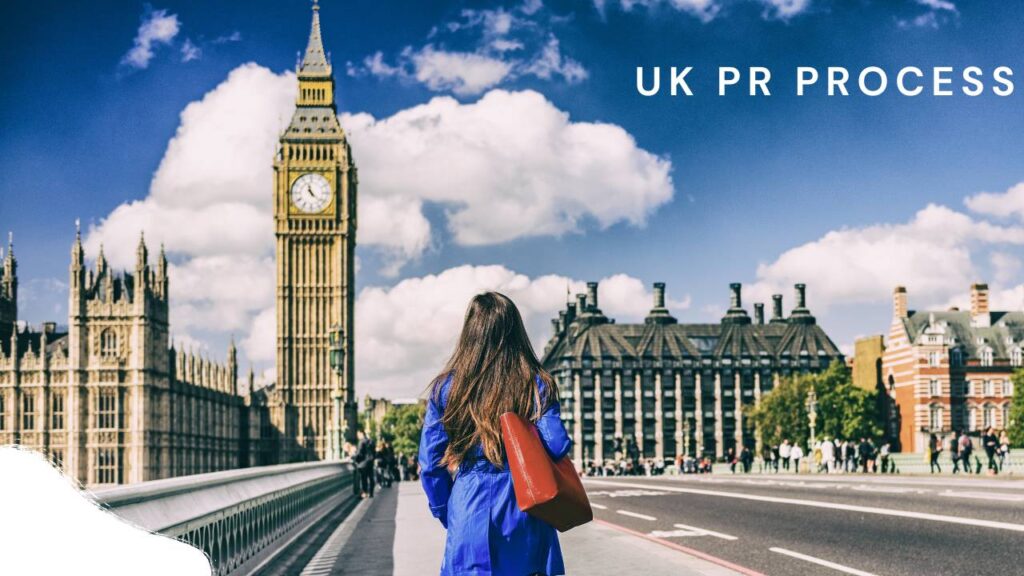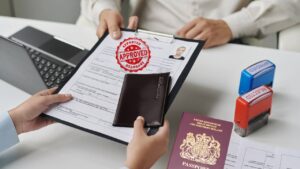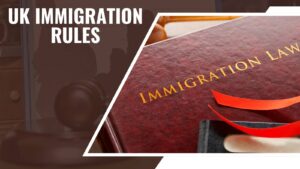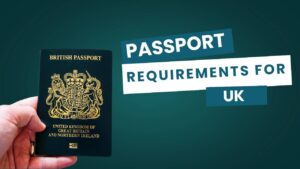Securing permanent residency in the United Kingdom is a significant milestone for immigrants who want to establish a stable and secure life in the country. The UK PR Process involves various steps and strict eligibility criteria, but understanding the procedure will empower you to navigate it smoothly. Here outlines every essential stage of the process in 2025, explaining what you need to do to obtain Indefinite Leave to Remain (ILR) and enjoy the benefits that come with permanent residency.
What is UK Permanent Residency?
Permanent residency, also known as Indefinite Leave to Remain (ILR), gives you the legal right to live and work in the UK without any time restrictions. Unlike temporary visas that require renewal, ILR lets you stay indefinitely, which means you no longer need to worry about visa expiry dates or sponsorship requirements. With ILR, you gain access to public services, healthcare, and education on equal terms with British citizens. You can also sponsor family members and apply for British citizenship once eligible.
ILR acts as a gateway to full citizenship, so achieving permanent residency is a critical step for those looking to put down long-term roots in the UK. It symbolizes your commitment and integration into British society and opens up more freedoms and opportunities.
Who is Eligible for UK PR in 2025?
To start the UK PR Process, you must first determine if you meet the eligibility requirements. Generally, the UK Home Office requires that you have legally lived in the UK for a qualifying period, usually five continuous years under a relevant visa category.
If you hold a Skilled Worker visa, you must have completed five years of lawful residence in the UK under this visa or a qualifying previous visa. Family members of British citizens or settled persons, such as spouses or dependent children, typically become eligible after five years of continuous residence as well. Refugees or humanitarian protection holders may also apply after five years, while those who have lived legally in the UK for ten years can apply under the long residence route.
Each route has specific rules, but all applicants must demonstrate good character and lawful residence without significant breaches of immigration rules. Any overstays, criminal convictions, or serious absences from the UK could affect eligibility.
Step-by-Step UK PR Process Explained
Step 1: Meet the Residency Requirement
The foundation of the UK PR Process lies in meeting the continuous residency requirement. For most applicants, this means living in the UK lawfully for at least five consecutive years. During this period, you cannot spend more than 180 days outside the UK in any 12-month period, as excessive absences may break your continuous residency.
You should carefully track your travel dates and maintain thorough records. If you had compelling reasons for absences, such as illness or family emergencies, document these thoroughly with supporting evidence like medical reports or official letters. The Home Office scrutinizes absences carefully, so the more detailed and transparent your evidence, the better your chances of approval.
Make sure you keep official documents that prove your residency over the years—rental agreements, employment letters, utility bills, bank statements, and council tax records all serve as critical proof of your presence in the UK. These records demonstrate to the Home Office that you genuinely made the UK your home.
Step 2: Pass the Life in the UK Test
The Home Office requires almost all ILR applicants to pass the Life in the UK Test, a compulsory step designed to assess your knowledge of British history, culture, laws, and society. You cannot submit your ILR application without passing this test.
The test consists of 24 multiple-choice questions that you must answer within 45 minutes. Topics cover a wide array of subjects, including British government, traditions, holidays, historical events, and social values. The aim is to ensure that permanent residents have a sound understanding of how the UK operates and what values underpin the society.
Preparing thoroughly is essential. The official “Life in the UK” handbook contains all the information you need, and many applicants find that reading it multiple times, taking practice tests, and using online revision tools boosts confidence. Booking the test is straightforward but requires an appointment at an authorized test center and payment of a fee, which is non-refundable.
Passing the Life in the UK Test demonstrates your commitment to integrating into British life, and successfully passing signals that you are ready to settle permanently.
Step 3: Meet the English Language Requirement
Demonstrating your English language proficiency is a key requirement of the UK PR Process. The Home Office expects you to have at least a B1 level on the Common European Framework of Reference for Languages (CEFR), which means you can communicate effectively in everyday situations.
You can prove your English ability in several ways:
- Take and pass an approved English language test from a Home Office-recognized provider.
- Provide evidence of a degree taught in English from a UK university or an overseas institution accepted by UK authorities.
- Be a citizen of a majority English-speaking country such as the United States, Canada, Australia, or New Zealand, which typically exempts you from further testing.
It is important to submit valid, official certificates as evidence. If you fail to meet this requirement or do not provide proof, your ILR application may be refused. Note that certain groups, such as older applicants or those with specific medical conditions, can apply for exemptions but must submit medical documentation supporting their case.
Mastering English helps you integrate better into British society and improves your chances of success, not just in your PR application but in everyday life.
Step 4: Prepare and Submit the UK PR Application
Once you satisfy the residency, language, and Life in the UK Test requirements, it is time to prepare and submit your Indefinite Leave to Remain application. Each visa category has its own specific application form:
- SET(O) is for most general ILR applications.
- SET(M) is for family route applicants.
Completing the application accurately is essential. You must double-check all information, as errors or omissions can cause delays or refusals.
You need to compile and submit a comprehensive set of documents, including:
- Your current and previous passports showing your travel history.
- Biometric residence permits or visas.
- Proof of continuous residence, such as tenancy agreements, utility bills, employment letters, or bank statements.
- Your Life in the UK Test pass certificate.
- English language test certificate or evidence of exemption.
- Evidence of relationship if applying on family grounds (marriage or birth certificates).
- Any additional documents proving your immigration status and compliance.
Your documents should be organized, legible, and translated into English by certified translators if necessary. Providing clear evidence helps the Home Office assess your application efficiently and positively.
Don’t forget to pay the application fee, which as of 2025 can range between £2,500 and higher depending on your visa category and any optional services like priority processing. Paying the fee correctly and keeping receipts is vital for your records.
Step 5: Attend a Biometric Appointment
After submitting your application, the Home Office will invite you to attend a biometric appointment at a UK Visa and Citizenship Application Services (UKVCAS) center. At this appointment, you must provide your fingerprints, photograph, and signature. These biometrics verify your identity and help protect against identity fraud and forgery.
Missing or failing to attend this appointment can lead to the refusal of your application. Therefore, make sure you book your appointment promptly and bring all the necessary documents and appointment confirmation.
Biometric data is securely stored and used throughout your immigration journey. Receiving your Biometric Residence Permit (BRP) after approval will serve as your proof of ILR status.
Step 6: Wait for the Decision
Once your application and biometrics are submitted, you enter the waiting period. Standard processing times can take up to six months, though paying for priority services can speed this up to just a few weeks. During this time, it is important to avoid travel outside the UK unless absolutely necessary because leaving the country may complicate your application status.
Remain available to respond quickly if the Home Office requests additional documents or clarification. Being proactive and responsive improves your chances of timely approval.
While waiting, maintain lawful status by ensuring your current visa does not expire. If your visa expires while waiting for a decision, you may be granted temporary permission to stay, but you should confirm this with official guidance.
Step 7: Receive Your Indefinite Leave to Remain (ILR)
When the Home Office approves your application, they will issue your ILR status, usually through a Biometric Residence Permit. This permit proves your right to live, work, and study in the UK without restrictions.
ILR holders enjoy many benefits, including access to public services and healthcare, the ability to travel freely in and out of the UK (with some time limitations), and the right to sponsor family members for settlement.
ILR is also the final step before applying for British citizenship. Most ILR holders can apply for citizenship after holding ILR for one year, provided they meet other residency and good character requirements.
Remember that ILR can lapse if you stay outside the UK for more than two consecutive years, which is considered abandonment of your settled status.
Important Tips for a Successful UK PR Application in 2025
Maintain Detailed Records and Minimize Absences
Keeping a detailed log of your travel and residence history is essential. If you must travel, keep proof of reasons and dates to explain any absences. This evidence can save your application from refusal due to broken continuous residence.
Stay Informed of Policy Changes
Immigration rules change frequently. Staying updated via the official UK government website or seeking advice from immigration professionals ensures your application meets the latest standards and avoids surprises.
Consider Professional Advice
Many applicants benefit from consulting qualified immigration advisors or solicitors. Experts help you understand complex rules, prepare strong applications, and deal with any complications promptly.
How to Get a UK Visa Fast: Step-by-Step Guide for Quick Approval
Approach the process with confidence and care, keep yourself informed, and don’t hesitate to seek professional help to make your permanent residency journey as smooth as possible.
FAQs
1. What is the UK PR Process?
The UK PR Process refers to the steps and requirements to obtain Indefinite Leave to Remain (ILR), allowing you to live and work in the UK permanently without visa restrictions.
2. How long do I need to live in the UK before applying for PR?
Typically, you must live in the UK continuously for five years under a qualifying visa category, such as Skilled Worker or family visa, to be eligible for permanent residency.
3. What documents are required for the UK PR Process?
You need passports, biometric residence permits, proof of continuous residence (bank statements, utility bills), Life in the UK Test pass certificate, English language test results, and any family or relationship documents if applicable.
4. What is the Life in the UK Test?
It is a mandatory test to assess your knowledge of British history, culture, laws, and society. Passing it is a requirement before applying for permanent residency.
5. Do I need to prove English language proficiency for UK PR?
Yes, you must show you have at least B1 level English by passing an approved test, holding a degree taught in English, or being a citizen of an English-speaking country.
6. Can I apply for PR if I had absences from the UK during my qualifying period?
Yes, but you must not have spent more than 180 days outside the UK in any 12-month period. You should provide strong evidence and valid reasons for any absences.
7. How much does the UK PR application cost?
Application fees vary but typically range around £2,500 as of 2025. Additional costs include the Life in the UK Test, English tests, and biometric appointments.
8. How long does the UK PR Process take?
Standard processing can take up to six months, though priority services are available to speed up the decision, sometimes within a few weeks.
9. Can I travel while my UK PR application is pending?
It’s best to avoid travel during the process, as leaving the UK may affect your application or complicate your status, especially if your current visa expires.
10. What are the benefits of obtaining UK permanent residency?
ILR allows you to live and work indefinitely in the UK, access public services and healthcare, sponsor family members, and eventually apply for British citizenship.






